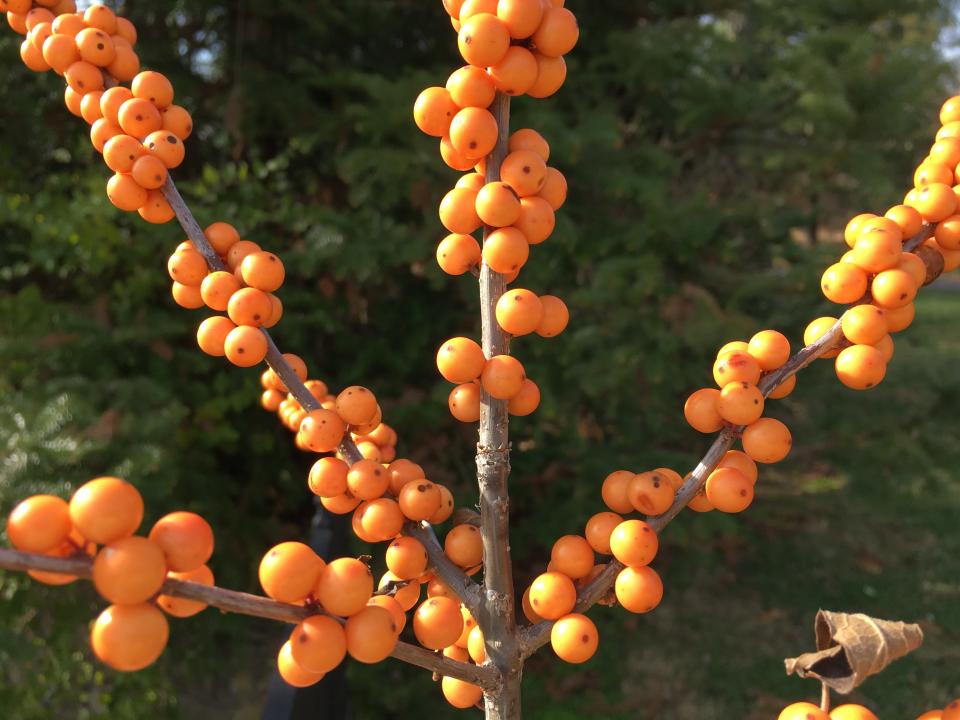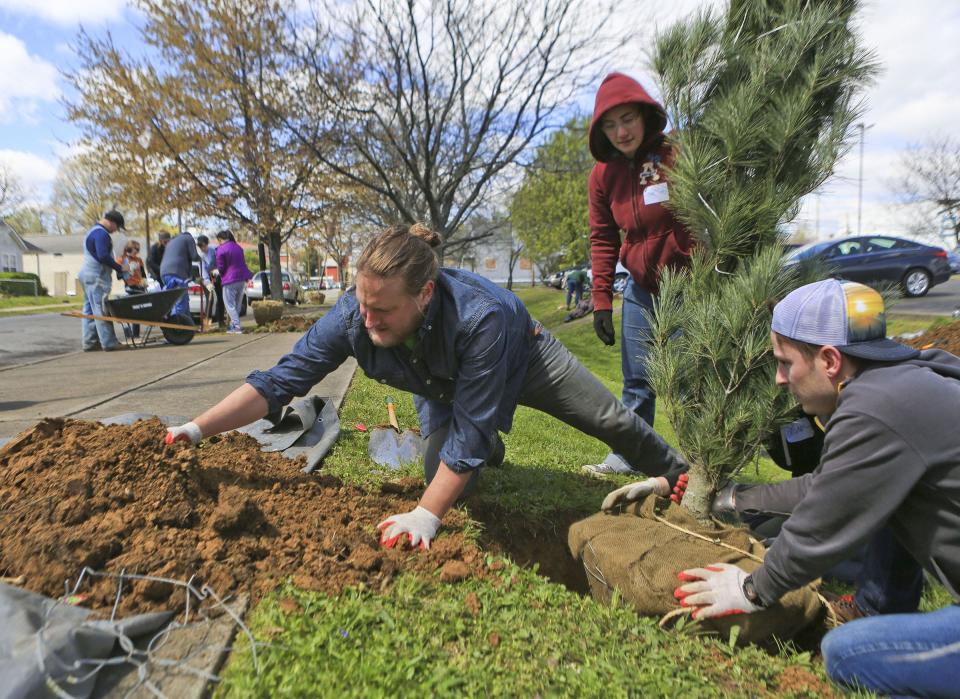Planning to replace some plants? Here are 6 tips for replacing plants in your garden
For a change this week, we're not going to talk about plants killed by the polar blast. Let's shift topics as we look forward to replacing a few trees or shrubs that you’ve lost to, well, just about any reason.
So, let's talk about how to plant a tree. Seemingly, it's pretty simple. You go to the nursery. You pick out a tree. You bring the tree home. You dig a hole in the ground, drop (ahem, gently place) the tree in the hole, backfill, water, then go inside and catch the last few holes of The Masters.
Oh, if it was just that simple!
The truth is that while the process of picking out a new plant and successfully establishing it in the garden isn't all that complicated, there are lots of places the train can run off the tracks. So, let's take them one at a time.
How to choose the right plant for your garden

This one seems pretty straightforward but can still trip you up if you’re not careful. If you’re replacing a plant, the first thing to consider is whether or not that plant was in the right spot in the first place, or perhaps, if it was the right plant for that spot. Whether the plant was put there by you, a previous homeowner, "a professional" or anyone else, replacing the expired plant in kind may not be the best course of action. Circumstances may have changed. Maybe it wasn't the best choice in the first place.
You may like:These 6 plants signal that yes, spring is already here in Kentucky
If you need help picking out an appropriate species or variety, there’s plenty of help out there. Online, you can look for regional plant award programs such as Kentucky’s Theodore Klein Plant Awards. But you can also learn from looking at what’s performed well in your neighborhood or at public sites with large, long-established tree collections, such as Cave Hill Cemetery, 701 Baxter Ave., Bernheim Arboretum and Research Forest, 2075 Clermont Road, Clermont, or Yew Dell Botanical Gardens, 6220 Old LaGrange Road, Crestwood, to name a few.
How to dig a hole in your garden for a new plant

You can spend all the time and effort in the world to pick out the most perfect tree on the planet. But if you don’t give it a fighting chance in the ground, why bother? And there’s more to digging a proper planting hole than you might think.
While it might seem a no-brainer, the first thing to consider when digging a planting hole is whether or not there is anything down there that might be a problem: cable lines, phone lines, gas lines, 60 billion-volt electric line, you name it. Sure, they're supposed to be buried to some code-defined depth, but do you really want to find out the hard way? Check with your local utility company to be certain. In Kentucky, you can dial 811 for help.
Once you're cleared to dig your hole, the two most important things to get right are the diameter and depth of the hole. A good general guide for hole width is two times the diameter of the root ball, although wider is almost always better. The wider hole will provide a generous volume of loose soil for roots to grow into as they settle into their new home.
You may like:How to save evergreens, holly, Nandina and cherry laurel plants after a cold snap
But while you have some leeway in planting hole width, the proper depth of a planting hole is critical. In the old days, we were taught to dig the hole the depth of the soil ball and then loosen 12 inches of soil in the bottom of the hole. But over the years we've learned that doing so results in the ball sinking over time, the roots settling too deep in the hole. Leaving the root ball on undisturbed soil means that the plant won’t sink into the hole over time, insuring that the tree’s roots will have adequate access to good oxygen exchange.
How do you get rid of burlap wrapping on a new plant?
If your tree’s root ball is wrapped in burlap, the best procedure is to gently place the root ball on the undisturbed bottom of the hole, carefully cut the burlap away from the top and sides of the ball, and backfill to support the ball. If the tree has a wire cage surrounding the root ball, treat it as you did the burlap — after placing the tree in the hole, gently snip and remove the top and sides of the cage.
For container-grown plants, remove the plastic container and use a utility knife or your (sharp!) spade to slice the surface and/or circling roots before planting as you would a burlap-wrapped root ball.
Why you should backfill with compost when planting
While this topic could occupy the next 50 weeks of columns, the simplest recommendation is to amend the backfill with compost. I'll just say this once and move on for now — you can never go wrong adding a few scoops of good quality compost to your backfill. Now I know I’ll get hate mail from some about this pronouncement but I’m willing to engage in an armed duel to defend my honor and the health and welfare of trees the world over!
You may like:Welcome to 'calm country': This café's cuisine serves one of a kind lavender-infused flavors
Why you need to immediately water your new plants
We'll make this one easy. I don't care if we are forecasted to have a 20-inch hurricane-remnant-rain hit town five minutes after you finish planting your tree — water it anyway. Soak it. Soak it again tomorrow. Soak it twice a week through the summer. You can stop in November.
Should you stake your new plants?
Here's another big topic we'll get to in detail another day. While there are lots of opinions and tons of research. the take-home message is the less you stake the better. Allowing the upper portion of the tree to move in the breeze helps to establish a stout trunk that can support the tree as it grows. Tightly staked trees develop spindly trunks that tend to flop as soon as you remove the stake.
The best approach is to support the tree as close to the ground as possible. Some people actually support newly planted trees by driving stakes directly through the root ball and into the undisturbed soil at the bottom of the hole.
Happy planting!
Paul Cappiello is the executive director at Yew Dell Botanical Gardens, 6220 Old Lagrange Road, yewdellgardens.org.
This article originally appeared on Louisville Courier Journal: What to know about the right way to replace plants in the garden

